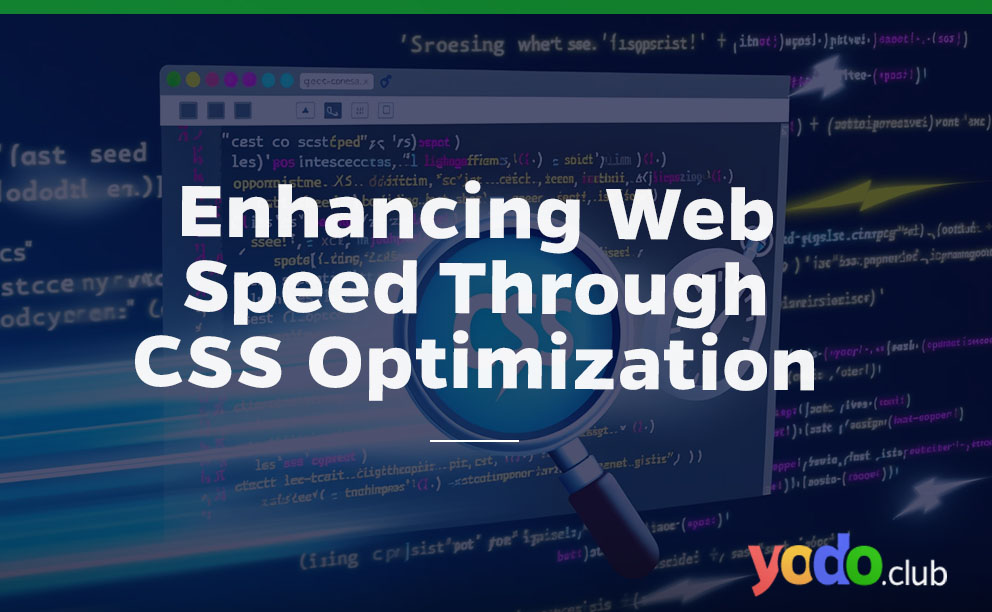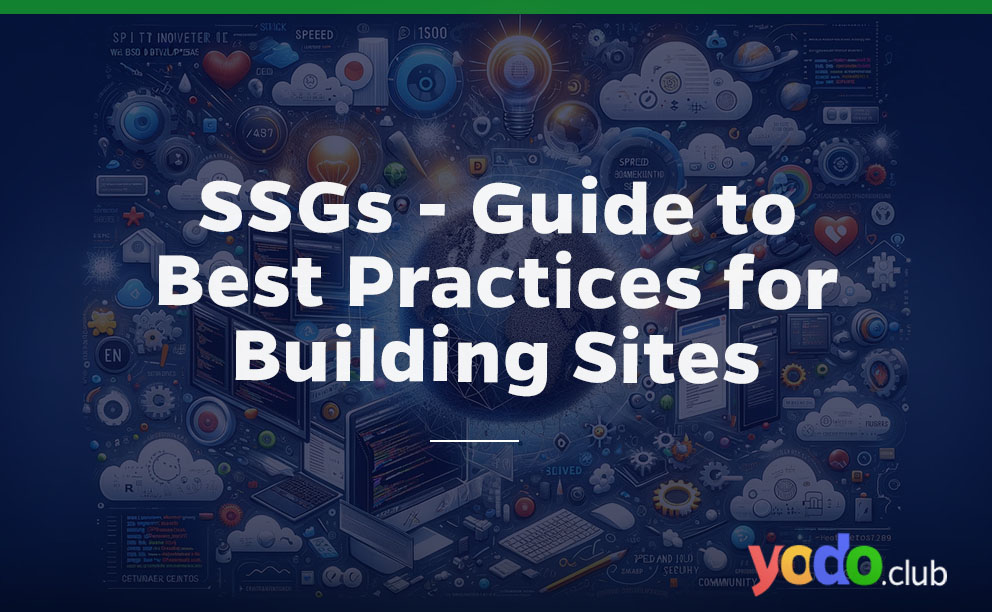Page load speed is crucial in today’s digital landscape, directly affecting user experience and SEO rankings. Studies indicate that slow-loading pages can deter users, impacting a website’s ability to engage and retain visitors. Search engines reward faster sites with higher search result placements, emphasizing the need for speed optimization.
CSS is vital for website aesthetics but can slow down page loads if not optimized, as browsers need to download, parse, and apply CSS rules before fully displaying a page. Therefore, optimizing CSS by reducing file sizes and eliminating unnecessary code is essential for developers to balance aesthetics with performance, enhancing user experience and SEO.
Key Takeaways
-
- Critical CSS Optimization: Inline essential CSS to enhance initial load speed and improve user experience.
- Unused CSS Removal: Use tools like PurgeCSS to remove unneeded CSS, reducing file size and boosting rendering speed.
- CSS Minification: Minify CSS to eliminate whitespaces and comments, lowering download times.
- Asynchronous Loading: Asynchronously load non-essential CSS to avoid blocking and increase page responsiveness.
- Efficient Framework Use: Selectively use CSS frameworks to prevent surplus code and utilize clean-up tools for unused CSS.
Table of Contents
CSS and Its Impact on Page Load
The browser’s Critical Rendering Path (CRP) involves converting code to visual content, necessitating the DOM and CSSOM construction before rendering. CSS, crucial in this process, is render-blocking, meaning browsers must pause until CSS is fully processed. This path can slow down page loading, especially with complex CSS.
The negative impact of render-blocking CSS on page visibility and interaction underscores the need for optimization. Strategies to mitigate this include eliminating unnecessary CSS, modularizing CSS files, and using asynchronous loading techniques. Recognizing “expensive” CSS properties affecting layout and render times is vital to writing efficient CSS.
Strategies for Optimizing CSS to Load Page Faster
Optimizing your CSS is necessary to enhance your site’s loading speed and overall performance. Here’s a refined approach:
Minimizing CSS File Size
Removing Unused CSS
PurgeCSS and Chrome DevTools’ Coverage tool effectively identifies and eliminates unused CSS, streamlines your stylesheet, and improves efficiency.
Consolidating and Compressing CSS
Merging CSS files reduces HTTP requests while minifying and compressing them shrinks file sizes, boosting load times and performance. CleanCSS is a notable tool for this purpose, offering optimization to refine your CSS’s impact.
Prioritizing Critical CSS
Prioritizing critical CSS increases your site’s load time by ensuring that content is rendered quickly above-the-fold. Inlining essential CSS in the HTML head eliminates the need for the browser to wait for the entire CSS file, thus improving the initial load time.
For non-essential CSS, using the preload attribute in <link> tags allows asynchronous loading, preventing render-blocking and speeding up the time to meaningful content. These methods streamline rendering, which is crucial for a fast and responsive user experience.
Efficient CSS Delivery
Utilizing the Preload Attribute for CSS Files
The preload attribute in <link> tags can prioritize the loading of essential stylesheets, ensuring they’re fetched early without rendering blockage. This is particularly useful for fonts and other critical resources.
Pros and Cons of Inlining Critical CSS
While inlining critical CSS can improve the first paint time, it increases the size of your HTML document. It’s a trade-off that needs careful consideration, balancing improved initial load times against potential increases in HTML file size.
Optimizing CSS for Different Devices
Media Query Rendering for Device-Specific Styles
Media queries allow you to apply CSS rules based on device characteristics like width, height, or orientation. This can tailor the user experience to different devices, ensuring optimal layout and performance.
Progressive Rendering for Component-Specific Styles
Progressive rendering involves structuring your CSS and JavaScript to allow the browser to render the page in stages, improving the user’s perceived load time. This technique can be particularly effective for large web applications with multiple components.
Modern CSS Layout Techniques
Modern layout methods like CSS Grid and Flexbox provide more efficient ways to design web layouts than traditional float-based layouts. These techniques offer better performance and flexibility, allowing responsive designs that adapt to various screen sizes without excessive CSS rules.
Advanced CSS Optimization Techniques
These aim to streamline code and enhance rendering performance.
Reducing CSS Complexity
Shorthand Properties
CSS shorthand properties enable setting multiple values under a single property, enhancing code conciseness and readability. For example, the padding shorthand allows specifying values for all four sides of an element in one line, like padding: 10px, 20px, 40px, efficiently reducing CSS file size.
Segmenting CSS Code
Segmenting CSS into modular pieces enhances maintainability and site performance, ensuring only relevant styles load per page. This approach minimizes unused CSS, contributing to faster page rendering.
Optimizing CSS Rendering
The will-change Property
The will-change CSS property advises the browser on elements expected to change, like during animations, allowing for preemptive optimization. This proactive approach can smooth out animations and interactions, improving the user experience.
CSS Containment
The contained Property in CSS confines an element’s layout, style, and paint to itself, preventing its influence on the broader document. This containment reduces the browser’s workload during style recalculations and element re-renderings, which is particularly beneficial in complex web apps.
Applying these methods customizes CSS rendering, contributing to quicker page loads and smoother interactions. Use will-change and contain judiciously to target specific elements or components for optimized rendering and layout recalculations.
Tools and Resources
Various tools and resources are available to help identify and address CSS-related issues.
Tools for CSS Optimization
-
- Chrome DevTools: Offers a real-time Performance Monitor and Performance panel to analyze CSS performance by highlighting metrics like CPU usage, layout, and style recalculations per second. It’s a valuable tool for identifying bottlenecks in your CSS code.
- UnCSS, UnusedCSS, PurgeCSS, PurifyCSS: These tools analyze your HTML and CSS to identify and remove unused CSS rules. They are handy for reducing file size and improving load times by eliminating unnecessary styles.
Analyzing CSS Performance Impact
To measure and assess the impact of CSS on your website’s performance, you can use:
-
- Chrome DevTools’ Performance Monitor: To get real-time insights into how your CSS affects your site’s CPU usage, layout, and style recalculations.
- DevTools Performance Report: Allows recording of page activities for a detailed analysis of performance issues. This feature can help you identify excessive CSS animations and high loading, rendering, and painting metrics indicative of CSS problems.
Frequently Asked Questions
What is Critical CSS, and why is it important?
Critical CSS refers to the minimal set of CSS needed to render the above-the-fold content of a webpage. It’s important because it enables the content to be displayed to the user as quickly as possible, improving perceived performance and user experience. By lining Critical CSS in the HTML document and deferring the rest, websites can reduce initial load times and prevent render blocking.
How can unused CSS negatively impact page load times?
Unused CSS adds unnecessary bulk to your CSS files, which the browser must download, parse, and process, even though it doesn’t contribute to the page’s appearance. This extra processing can slow page load times, especially on mobile devices or network connections, leading to a poorer user experience.
What does ‘minifying CSS’ entail, and how does it contribute to faster page loads?
Minifying CSS involves removing all unnecessary characters from the CSS files, such as whitespace, comments, and block delimiters, without changing the code’s functionality. This process reduces the size of CSS files, making them faster to download and process by the browser, which can significantly improve page load speeds.
Can the use of CSS frameworks affect page load speed? How?
Yes, CSS frameworks can streamline development but may introduce unnecessary CSS, potentially slowing page load times. It’s essential to use framework components relevant to your project selectively and employ tools like PurgeCSS to eliminate unused CSS, optimizing file size and load speed.
What is the difference between asynchronous CSS loading and inlining CSS.
Regarding CSS loading strategies, inlining critical CSS directly in the HTML ensures the immediate availability of essential styles, enhancing render times. Conversely, asynchronous loading of non-critical CSS, achieved through the preload attribute in <link> tags or JavaScript, prevents it from blocking page rendering. This balance between inlining critical CSS and asynchronously loading the rest can significantly improve page load performance.





 & Passion.
& Passion.